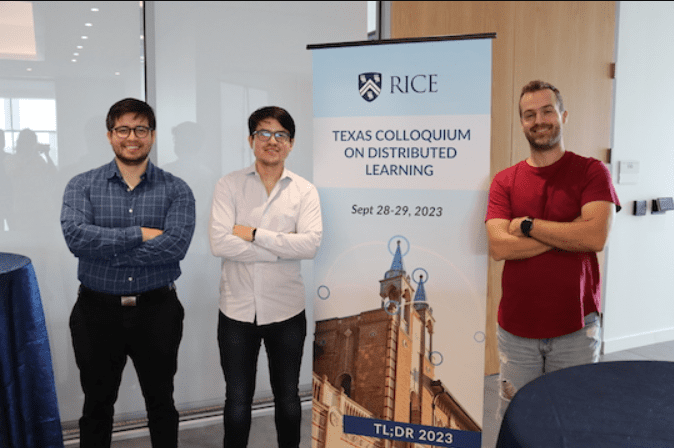TL;DR:
- Rice University hosted the Texas Colloquium on Distributed Learning, focusing on distributed computing and large-scale machine learning.
- Over 100 participants engaged in discussions on efficient algorithms, cost-effective computing platforms, and various aspects of distributed learning.
- Distributed optimization’s impact on modern ML/AI research was a key theme.
- Plenary speakers included experts from Microsoft Research, FAIR, and Google.
- The event was sponsored by Rice University and key academic institutions, organized by Rice’s engineering faculty.
Main AI News:
Rice University recently played host to the prestigious Texas Colloquium on Distributed Learning, a two-day symposium held at the state-of-the-art Ralph S. O’Connor Building for Engineering and Science. This event brought together over 100 professionals to engage in a series of insightful discussions and talks revolving around the realms of distributed computing and large-scale machine learning (ML).
The colloquium’s agenda encompassed a diverse array of subjects, from efficient distributed learning algorithms to the intricacies of training large-scale computing models using cost-effective, general-purpose computing platforms. Participants delved into topics such as system infrastructure, fairness, on-device distributed learning hardware, privacy considerations, optimization breakthroughs, theoretical contributions, and the practical applications of distributed learning.
One particularly intriguing topic that emerged during the proceedings was the profound impact of distributed optimization on contemporary ML and artificial intelligence (AI) research and, conversely, how advances in these domains reshape distributed optimization strategies. The efficiency in training AI models has been a driving force behind recent groundbreaking developments in computer science applications. However, the ability to navigate challenging training environments hinges on factors like task complexity and the availability of computational, communication, and financial resources. It is evident that traditional centralized-model training methodologies fall short when confronted with the sheer scale of today’s ML models, potentially hindering their performance and applicability. This limitation has spurred vibrant discussions on innovative approaches to distributed learning, addressing both theoretical and practical aspects, while forging stronger connections between academia and industry.
The colloquium featured distinguished plenary speakers who are leading lights in the fields of ML and AI, representing both industry giants and esteemed academic institutions. Notable names included luminaries from Microsoft Research, FAIR, and Google. This monumental gathering was made possible through the generous sponsorship of Rice University, the George R. Brown School of Engineering, and the Ken Kennedy Institute. The event’s organization was skillfully overseen by Rice’s very own engineering faculty, including Anastasios Kyrillidis, César Uribe, and Sebastian Perez-Salazar.
Anastasios Kyrillidis, an assistant professor of computer science and electrical and computer engineering, played a pivotal role in orchestrating this colloquium. Meanwhile, César Uribe, serving as Rice’s Louis Owen Assistant Professor in Electrical and Computer Engineering, contributed his expertise to ensure its success. Sebastian Perez-Salazar, an assistant professor of computational applied mathematics and operations research, added his invaluable insights to the event, making it a resounding triumph.
Conclusion:
This colloquium serves as a testament to the ever-growing synergy between distributed computing and machine learning. It signifies a pivotal shift towards innovative approaches in training AI models, with significant implications for the market. As these fields continue to converge, businesses must remain agile and receptive to emerging technologies and methodologies to stay competitive in the evolving landscape of AI and computing.

